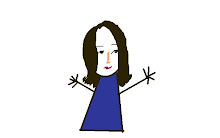I'm glad to have this experience, especially as a self-directed one rather than a set of lectures on the topic. The book also gave me a wealth of resources to consider, and I hope to have time to look over them more over break. What surprised me is that some of the 23 Things already felt outdated or an easier-to-use equivalent had been developed since it was written. Chapter 20 of our textbook talks about how most of these new applications and programs will have a short shelf life, which is why it's wise to only invest time in the ones that will be of actual use and benefit to the patrons.
The pace of change makes something like this project a constant activity to a librarian interested in Web 2.0. I feel like I'm entering the profession (well, hoping to enter, I suppose, in light of everything) at a time when efforts are being directed at developing the right technology for the right users at the right time, to steal part of the old reader's advisory saying. The ones that are thriving are the ones that genuinely create community or some sense of enjoyment as well as providing access.
I think that this influx of new technology has also helped many people to prioritize what's truly important to them in terms of the information around them. The concern surrounding the text-to-speech feature of certain software, especially Kindle, is less significant once you consider the considerable difference in quality between that and a trained narrator acting out the parts. Neil Gaiman wrote an interesting piece on this issue and I think it sums up to me some of these larger issues. Technology simply can't replace the human experience or actual social contact, but it can enhance it, if we choose our information wisely. As reference staff, we are facilitators of that process.
Sunday, December 6, 2009
Subscribe to:
Posts (Atom)
